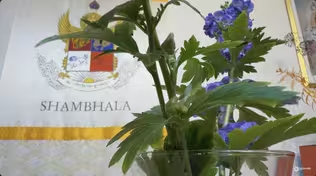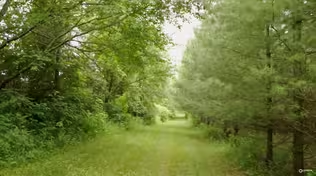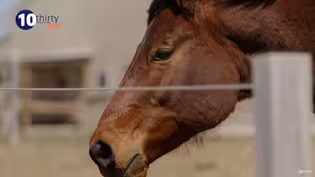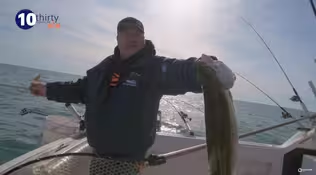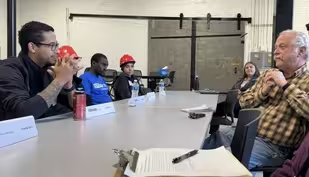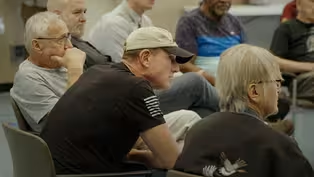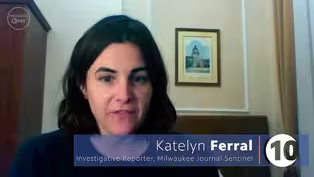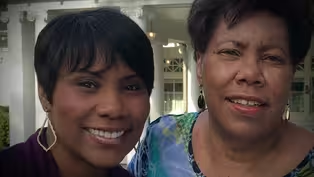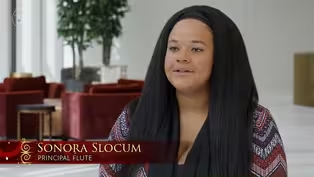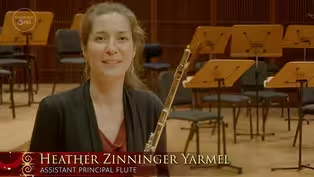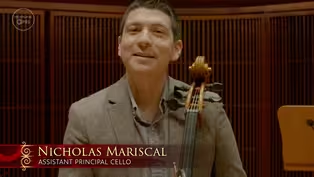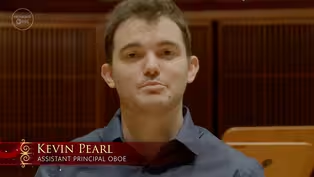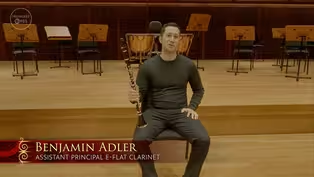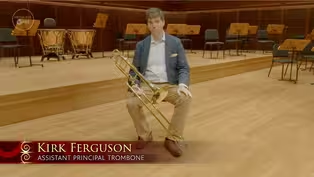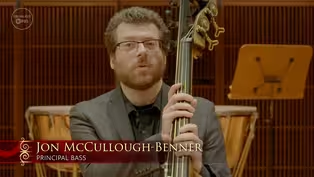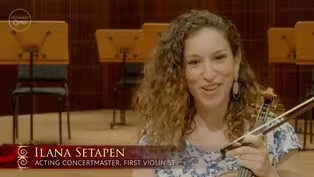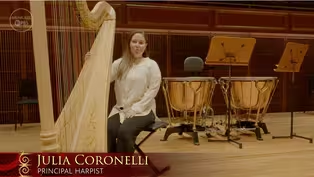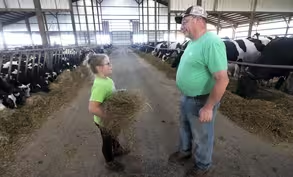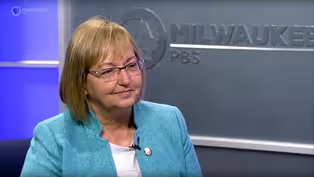10thirtysix
How We Heal - Outdoor Therapy
Clip | 6m 52sVideo has Closed Captions
Nature is a key component of positive mental health
Nature is a key component of positive mental health with current research showing its impact on depression, anxiety, attention and mood. In this segment, we explore the simple ways we can connect with the natural spaces around us.
Problems playing video? | Closed Captioning Feedback
Problems playing video? | Closed Captioning Feedback
10thirtysix is a local public television program presented by MILWAUKEE PBS
10thirtysix
How We Heal - Outdoor Therapy
Clip | 6m 52sVideo has Closed Captions
Nature is a key component of positive mental health with current research showing its impact on depression, anxiety, attention and mood. In this segment, we explore the simple ways we can connect with the natural spaces around us.
Problems playing video? | Closed Captioning Feedback
How to Watch 10thirtysix
10thirtysix is available to stream on pbs.org and the free PBS App, available on iPhone, Apple TV, Android TV, Android smartphones, Amazon Fire TV, Amazon Fire Tablet, Roku, Samsung Smart TV, and Vizio.
Providing Support for PBS.org
Learn Moreabout PBS online sponsorship- Growing up in the country, I had no idea how lucky I was to have nature around me all the time.
Okay, guys.
You have to be on your best behavior right now, okay?
Hi.
(lips smack) Good morning.
(laughs) One of the things I've found as a therapist is that spending time in nature is imperative for good mental health.
How are you guys?
Yeah, did you sleep good?
What is that?
A camera?
It reduces stress, lowers blood pressure, increases positive mood, and improves cardiac and respiratory function.
Doctors have even started prescribing time in nature as a treatment.
Hi, Jingle.
Don't eat Mama's hair.
You don't need to eat my hair.
No, you have plenty of hay.
Today, I've invited a certified naturalist and an outdoor therapist to my farm to learn how we can find healing in our own backyard.
(serene music) - My name's Jenna Burris.
I'm a psychotherapist of about 18 years, and I specialize in taking my clients outdoors for therapy.
(gentle music) - [Elizabeth] When you would have a client that would normally be seen indoors in an office, what would the difference be when you would move them to a trail or just outdoors?
- We grow when we get outside of our normal day-to-day environment.
When we go outside, this is where humanity started.
We spend 90% of our time indoors now, about 10% outside, and that's the opposite of where we were a couple hundred years ago.
We're meant to be outside, and I would invite people to try it.
I would invite people to see what nature has to show us, to reconnect with that part of ourself, the biological part of ourself, the part that is integrated with nature.
How does it affect us?
How do we affect it?
- So, as far as what we're going to look for today out here, what are some things that we should be aware of?
- One thing I would look for is just the different shades of green that you see all around, the different textures, and let your eye start to take in the mass amount of detail that's out here versus kind of seeing things in blocks.
Like, really look for the individual expression of each plant and each tree.
My name is Megan Drevline and I'm a Wisconsin Master Naturalist and a yoga and mindfulness instructor.
- [Elizabeth] How does nature help us heal?
- Nature is an incredible healer.
Everything from just the physical and mental benefits that you receive from breathing in the air in a space that's full of plants photosynthesizing and trees letting off information to communicate with other trees, like, you interact with that just through your breath.
So, just something as simple as being outside and breathing can shift your mood, your immunity, your sense of connection with the world around you, and those are all really powerful things in maintaining a healthy mental state.
We just had a lot of rainfall and I would suggest some nice deep breaths to kind of ground with the environment around you.
The rainfall has a great way of cleaning the air and releasing negative ions into the air, which have been proven to help with mood, with immunity, things along those lines, so it's a great way to just connect with, like, the actual microenvironment that you're experiencing, because you're absorbing the chemicals that the trees are releasing, you're absorbing the chemicals that the plants are releasing, and by chemicals, I mean, like, the best of things.
- Yeah, good chemicals.
- Yeah, the good chemicals.
(Elizabeth laughs) - One of my favorite parts of this trail is the pine rows.
- This tree is actually valued for more than just the way it looks.
I know that long, long, long ago in Celtic tradition around the winter solstice, people of the Celtic tradition would bring in pine and other coniferous branches to put around their mantle, and the heat from the fire through those winter months would release the essential oils into the air, boosting their immune system, because the chemicals these needles hold are also antimicrobial, antibacterial.
So, a lot of health benefits with these guys.
- Additionally, just being in the forest, the additional vitamin D we receive from the sun, the additional oxygen we receive from the trees, the little oils that the trees release, it works for us, and I think it works even therapeutically, because it improves our creativity, our problem solving.
There's great research through a lot of centers in Japan out to when they go out into the forest, taking people's biometrics before they go out, when they come back.
When it helps our heart rate, our breathing, it improves our brain functioning.
(tranquil music) (birds chirp) - [Megan] Not everybody has access to a yard, but it doesn't mean they don't have access to a space that they can connect to nature.
So, that might be a park.
That might be a trail.
Just even a tree.
You know, developing a relationship with a tree in the sense of, you know, observing it with a curious eye.
Like, what do the leaves actually look like?
You know, what make them unique?
How do they change through the seasons?
Like, how does the bark look?
What does the bark feel like?
Going outside, finding a place that you're kind of drawn to, and then really exercising curiosity about that space can really allow you to bring a connection into nature no matter where you live.
(tranquil music)
Clip | 9m 59s | Meditation has become a popular technique for dealing with stress and anxiety. (9m 59s)
Video has Closed Captions
Clip | 6m 52s | Nature is a key component of positive mental health (6m 52s)
Video has Closed Captions
Clip | 4m 55s | Our Vote 2024 Table Talk continues this month on the topic of democracy. (4m 55s)
Video has Closed Captions
Clip | 6m 52s | May is Mental Health Awareness Month. (6m 52s)
Video has Closed Captions
Clip | 5m 24s | Ewig Bros. Fish in Port Washington closed after 130 years in the fishing industry. (5m 24s)
Video has Closed Captions
Clip | 10m 14s | Stoughton Trailers is an example of grit and survival in dealing with work lost to China. (10m 14s)
Portia Young mother talks about the American Dream.
Video has Closed Captions
Clip | 3m 47s | Portia Young sits down with her mother to talk about the American Dream. (3m 47s)
Meet the Musicians - Sonora Slocum - Flute
Video has Closed Captions
Clip | 2m 1s | Meet the Musicians - Sonora Slocum - Flute (2m 1s)
Meet the Musicians - Heather Zinniger Yarme - Flute
Video has Closed Captions
Clip | 3m 1s | Meet the Musician - Heather Zinniger Yarmel - Flute (3m 1s)
Meet the Musicians - Nicholas Mariscal - Cello
Video has Closed Captions
Clip | 1m 56s | Meet the Musicians - Nicholas Mariscal - Cello (1m 56s)
Meet the Musicians - Kevin Pearl - Oboe
Video has Closed Captions
Clip | 2m 47s | Meet the Musicians - Kevin Pearl - Oboe (2m 47s)
Meet the Musicians - Ben Adler - Clarinet
Video has Closed Captions
Clip | 2m 14s | Meet the Musicians - Ben Adler-Clarinet (2m 14s)
Meet the Musician - Kirk Ferguson - Trombone
Video has Closed Captions
Clip | 2m 6s | Meet the Musician - Kirk Ferguson - Trombone (2m 6s)
Meet the Musician - Jon McCullough Benner - Bass
Video has Closed Captions
Clip | 1m 58s | Meet the Musician - Jon McCullough Benner - Bass (1m 58s)
Meet the Musician - Ilana Setapen- Violin
Video has Closed Captions
Clip | 3m 1s | Meet the Musician - Ilana Setapen-Violin - Ilana Setapen - Violin (3m 1s)
Meet the Musicians - Julia Coronelli - Harpist
Video has Closed Captions
Clip | 3m 7s | Meet the Musicians - Julia Coronelli - Harpist (3m 7s)
America's Dairyland - The Next Generation with Portia Young
Video has Closed Captions
Clip | 13m 39s | Next-generation Wisconsin dairy farmers and learn how their approach to farming. (13m 39s)
State Rep. Joan Ballweg Discusses Suicide Prevention Efforts
Video has Closed Captions
Clip | 15m 17s | State Rep. Joan Ballweg discusses new bills aimed to combat suicide in Wisconsin. (15m 17s)
Providing Support for PBS.org
Learn Moreabout PBS online sponsorship
- News and Public Affairs

Top journalists deliver compelling original analysis of the hour's headlines.

- News and Public Affairs

FRONTLINE is investigative journalism that questions, explains and changes our world.












Support for PBS provided by:
10thirtysix is a local public television program presented by MILWAUKEE PBS
